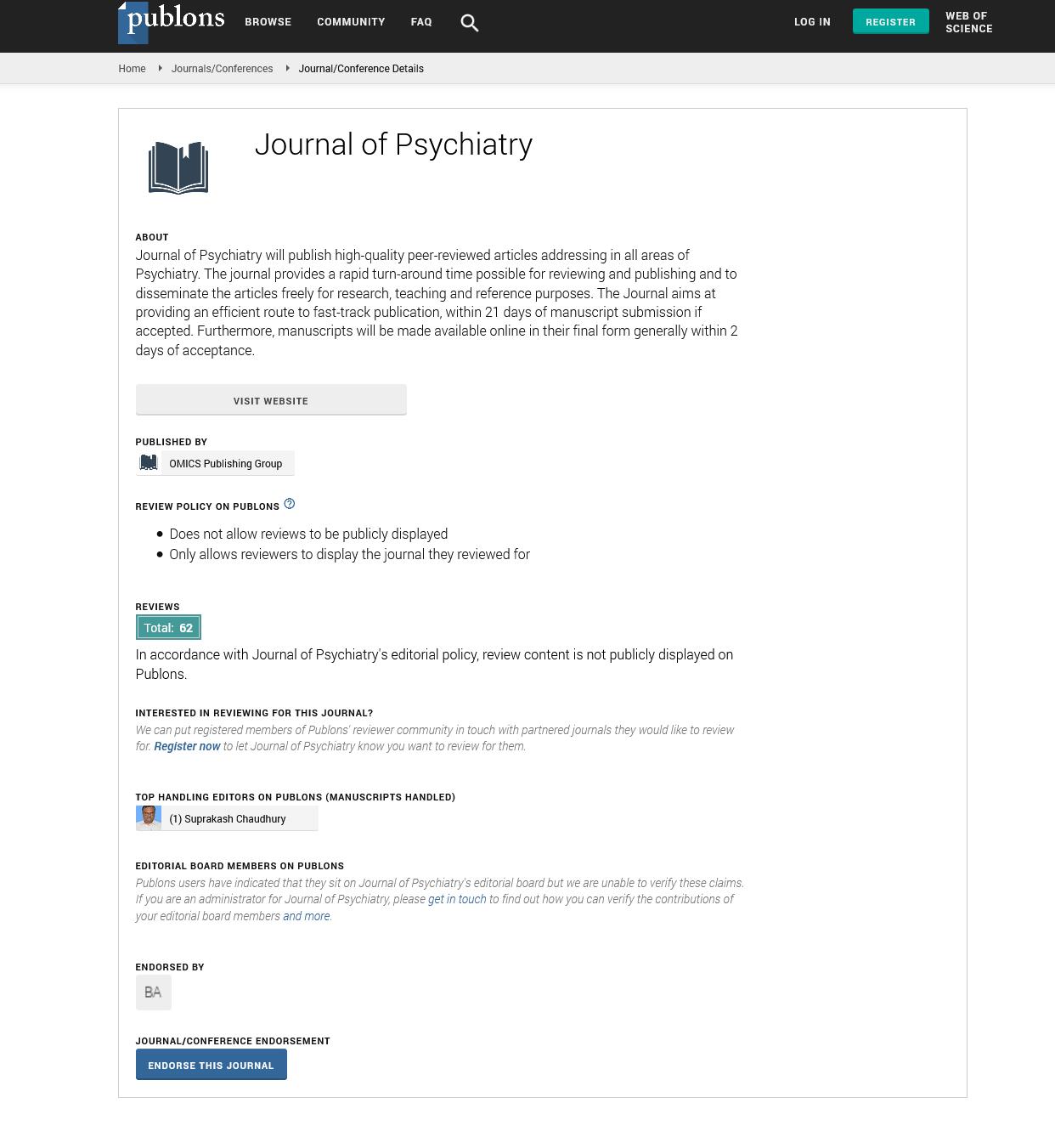Indexed In
- RefSeek
- Hamdard University
- EBSCO A-Z
- OCLC- WorldCat
- SWB online catalog
- Publons
- International committee of medical journals editors (ICMJE)
- Geneva Foundation for Medical Education and Research
Useful Links
Share This Page
Open Access Journals
- Agri and Aquaculture
- Biochemistry
- Bioinformatics & Systems Biology
- Business & Management
- Chemistry
- Clinical Sciences
- Engineering
- Food & Nutrition
- General Science
- Genetics & Molecular Biology
- Immunology & Microbiology
- Medical Sciences
- Neuroscience & Psychology
- Nursing & Health Care
- Pharmaceutical Sciences
Common child & adolescent psychiatric disorders presenting in Dhiraj Hospital, India: A retrospective study
19th Global Congress on Pediatricians & Child Psychiatry
July 12-13, 2017 Chicago, USA
Jain A, Kataria L and Goyal P
Dhiraj Hospital-Sumandeep Vidyapeeth, India
Posters & Accepted Abstracts: J Psychiatry
Abstract:
Background: There is a paucity of data on the mental health needs of children and adolescentâ??s patients in our country. Previously, some centers in the country have made significant efforts in conducting epidemiological surveys to assess and quantify these needs. However, these findings have not been replicated in all states, thus limiting the generalizability of the study. The present study aims to provide an estimate of the number of children presenting with psychiatric illness to the department of psychiatry at Dhiraj Hospital over a 2-year period. Methods: The present study is a retrospective chart review, undertaken to assess the presence and prevalence of various psychiatric disorders in children, aged 2-16 years, presenting to or referred to the psychiatry OPD over a two period (May 2014 to May 2016). A total of 1865 patientâ??s records have been reviewed and analyzed. The Diagnostic and Statistical Manual IV-TR, has been utilized for making the diagnosis. Results: Dhiraj Hospital is a multi-super specialty hospital located in the outskirts of Vadodara city, Gujarat, India. It has a capacity of more than 1000 beds and caters to a huge out-patient load of more than 1500 patients/day. The department of psychiatry, has a daily load of >80 patients/day, with one day in the week dedicated to evaluating only child psychiatry patients. Our child psychiatry patients comprise of a total of 8-10% of our total case load. Our findings suggest that majority of our patients came from a rural background, with minimal or no access to tertiary care centers. The mean delay in seeking treatment at a tertiary care center was 2 years. Of the 1865 patients analyzed, 35% patients received a diagnosis of attention deficit hyperactivity disorder, 30% had mental retardation (intellectual disability), 12% had behavior disorder NOS, 9% had nocturnal enuresis, and 7% children were diagnosed with having conduct disorders. Remaining 7% were diagnosed with other conditions including, learning disability, pica and breath-holding spells. Conclusions: Retrospective chart review provided us with an opportunity to understand the pattern of presentation of various child and adolescent disorders in our outpatient department. We commonly see mental retardation, which may be explained by the social, nutritional status and lack of stimulation among the rural mothers. Nutritional and social deprivation in rural children also contributes for higher rates of behavior disorders among the rural children. Our institute actively participates in overcoming the psychiatric issues arising out of malnutrition and poor socio-economic status.
Biography :
Email: draniljain3@gmail.com

